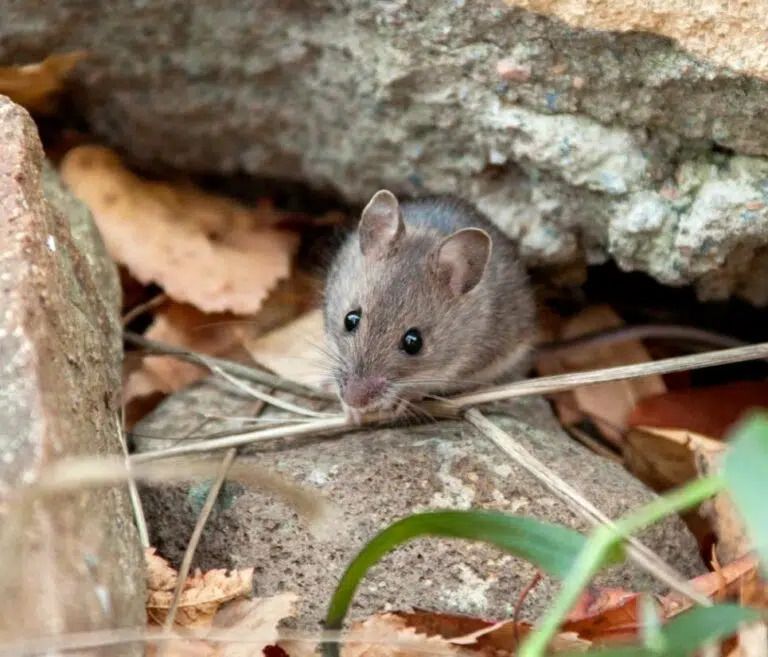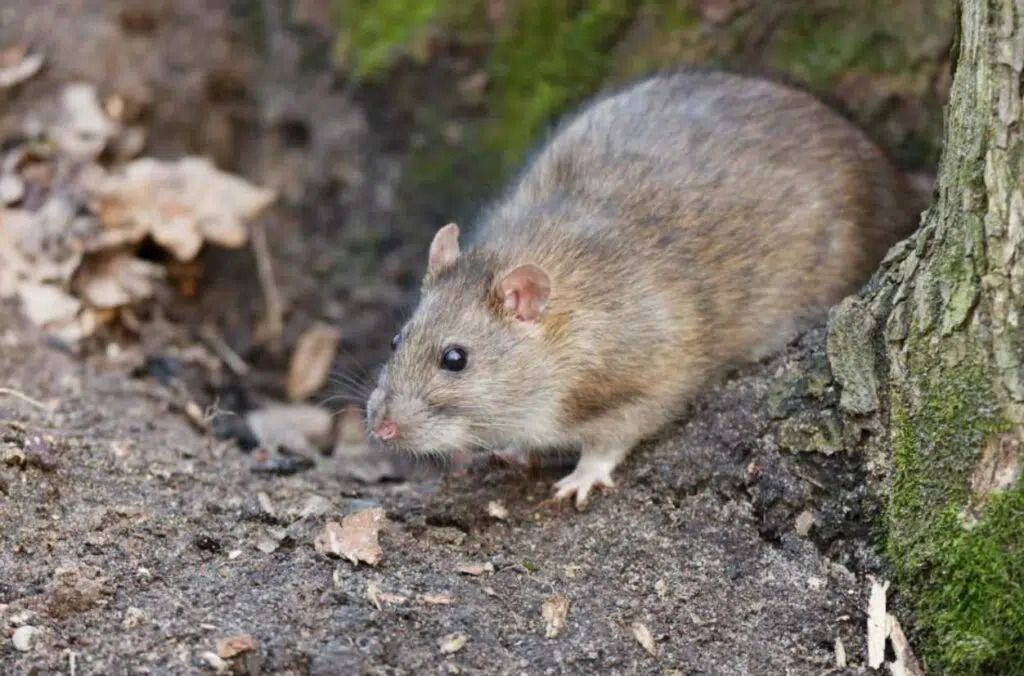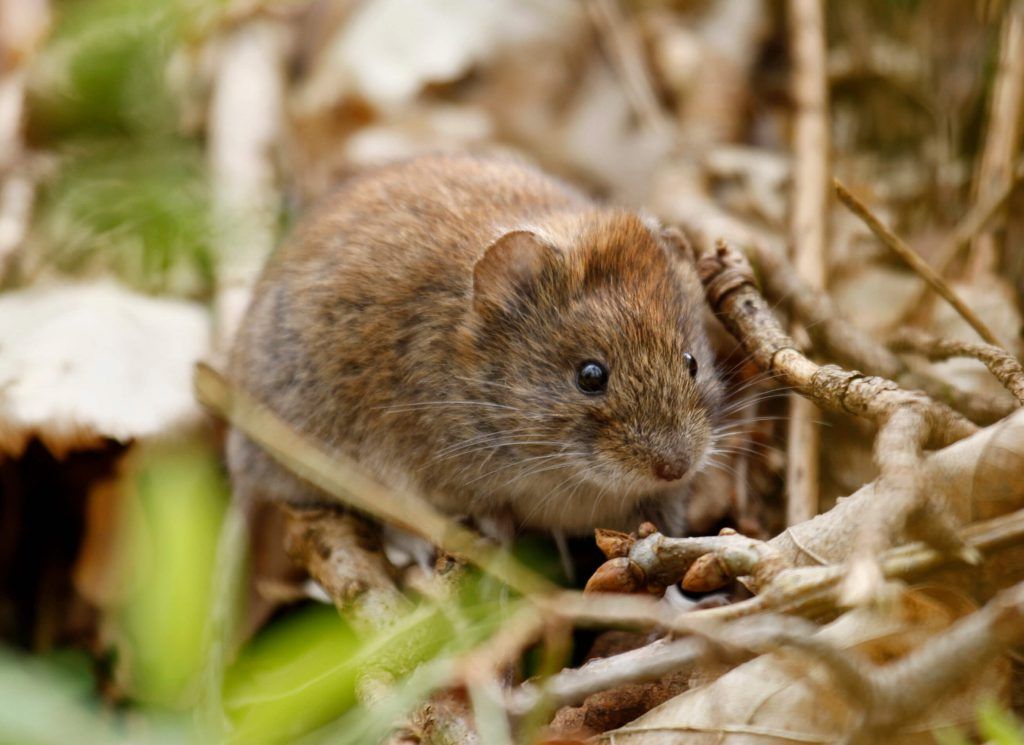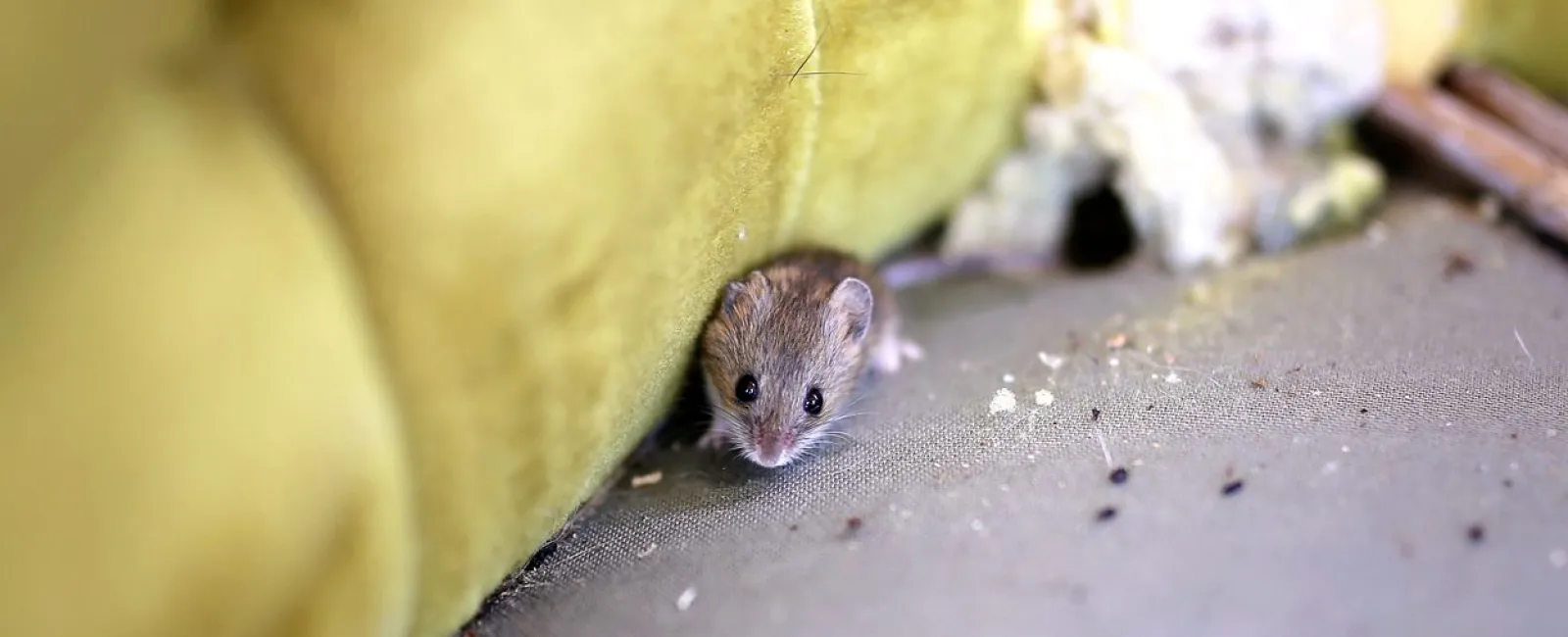Not sure if your property has a mouse, rat, or vole problem? Below, we'll provide some rodent identification tips to help you determine which type of infestation your home has.
MICE

Mice are one of the most common types of household pests, as they survive well in rural, suburban, and urban settings. While previously thought to be less intelligent than rats, recent studies show that these tiny rodents are just as capable of performing decision-making tasks. Although domesticated mice make for cute pets, feral mice can expose people to unsanitary conditions and diseases.
Appearance
The United States is home to several mouse species including the house mouse, deer mouse, white-footed mouse, harvest mouse, cotton mouse, woodland jumping mouse, cactus mouse, and California mouse. However, all of these mice share common physical characteristics:
- Rounded ears that are large relative to the head size
- A long, skinny, hairy tail
- A pointed or triangular snout
Most are brown, gray, or white, but some can have cream-colored bellies. Full-grown mice range from about two to four inches long.
Diet
Contrary to popular belief, cheese is not the best way to attract mice. Mice are omnivores. They love carbs, and they prefer to eat seeds, grains, and fruits. They can also eat insects, and under extreme duress, mice will even eat each other to survive.
Infestations
When mice infest your home, they can cause quite a bit of damage due to their incessant chewing and their nest-making behavior. Mice can chew through your walls, electrical wiring, and HVAC ductwork and tear apart your insulation, papers, furniture, and mattresses to get material for their nests.
Signs of a mouse infestation in your home include:
- Mouse droppings, which look like tiny brown or black grains of rice
- A musky odor
- A stale, ammonia-like smell, indicative of mouse urine
- Shredded papers and fabric
- Scratching or scurrying sounds inside walls or cabinets
- Strange behavior from your cats or dogs (ex. whining or scratching at walls or air vents)
RATS

Rats are another extremely common household pest because of their ability to adapt to a multitude of environments. While these rodents are a popular household pet and used frequently in lab settings due to their intelligence, feral rats can create an unhygienic environment if not controlled.
Appearance
Rats are notably larger than mice. For instance, the roof rat (one of the most common rat species in the U.S.) measures up to 12 inches long when fully grown, including the tail. Norway rats (the other most common U.S. rat) measure up to 18 inches long. When compared to a mouse, rats have a blunter snout, smaller ears, and a thicker tail. Rats can be an assortment of colors, including brown, gray, white, and black.
Diet
Similar to mice, rats are opportunistic omnivores. Although they prefer grains, seeds, and fruits, they will eat bugs, scraps out of garbage cans, and even other small animals.
Infestations
Rats can be highly destructive once they infest your home. Like mice, they are incessant chewers due to their ever-growing incisors, and they can chew into incredibly hard material—even cinder block and sheet metal. They can also destroy your home's insulation and personal belongings to gather material for their nests.
If your home has a rat infestation, you'll notice one or more of the following red flags:
- Rat droppings, which look like tiny brown or black beans
- A stale, ammonia-like smell, indicative of rat urine
- Rat teeth marks on wood, plastic, metal, etc.
- Dirty, greasy marks along your floors, counters, or air vents
- Rat runs: paths that rats wear down in the grass over time
- Shredded papers and fabric
- Scratching or scurrying sounds inside walls or cabinets
- Strange behavior from your cats or dogs (ex. whining or scratching at walls or air vents)
VOLES

Voles are often mistaken for other creatures. They're mistaken for mice and rats because of their small, brown, round-eared appearance. They're also mistaken for moles because of their tunneling behavior. However, voles are distinctive creatures with their own set of characteristics.
Appearance
Voles look like the stockier cousins of field mice. Although they share a mouse's rounded ears, voles have thicker bodies, much shorter tails, and rounder, blunter snouts. Most voles have fur that's a mixture of chestnut brown and black. Their eyes are small and black.
Diet
These rodents stick to a mostly vegetarian diet. They prefer to eat grasses, stems, bulbs, tubers, and herbaceous plants. Voles will also store seeds and plant matter underground for consumption later. During fall and winter, voles can eat tree roots and bark if necessary.
Infestations
Vole infestations take place almost exclusively outdoors. Here are some common clues that your home has a vole infestation:
- Several, shallow tunnels snaking through your lawn. The tunnels will be about two inches wide.
- Young trees and shrubs that won't stand up straight because voles have tunneled through their roots.
- Partially eaten bulbs or root vegetables in your garden.
- ¼ inch teeth marks in the trunks of trees and shrubs.
Vole activity usually spikes early in the spring. If the winter was mild, you can expect an extra boom in the local vole population.
Stay safe, stay clean, and stay protected from rodents in your home with Greenix Pest Control on your side. Schedule a pest control service or give our team a call today: (888) 800-7181.

